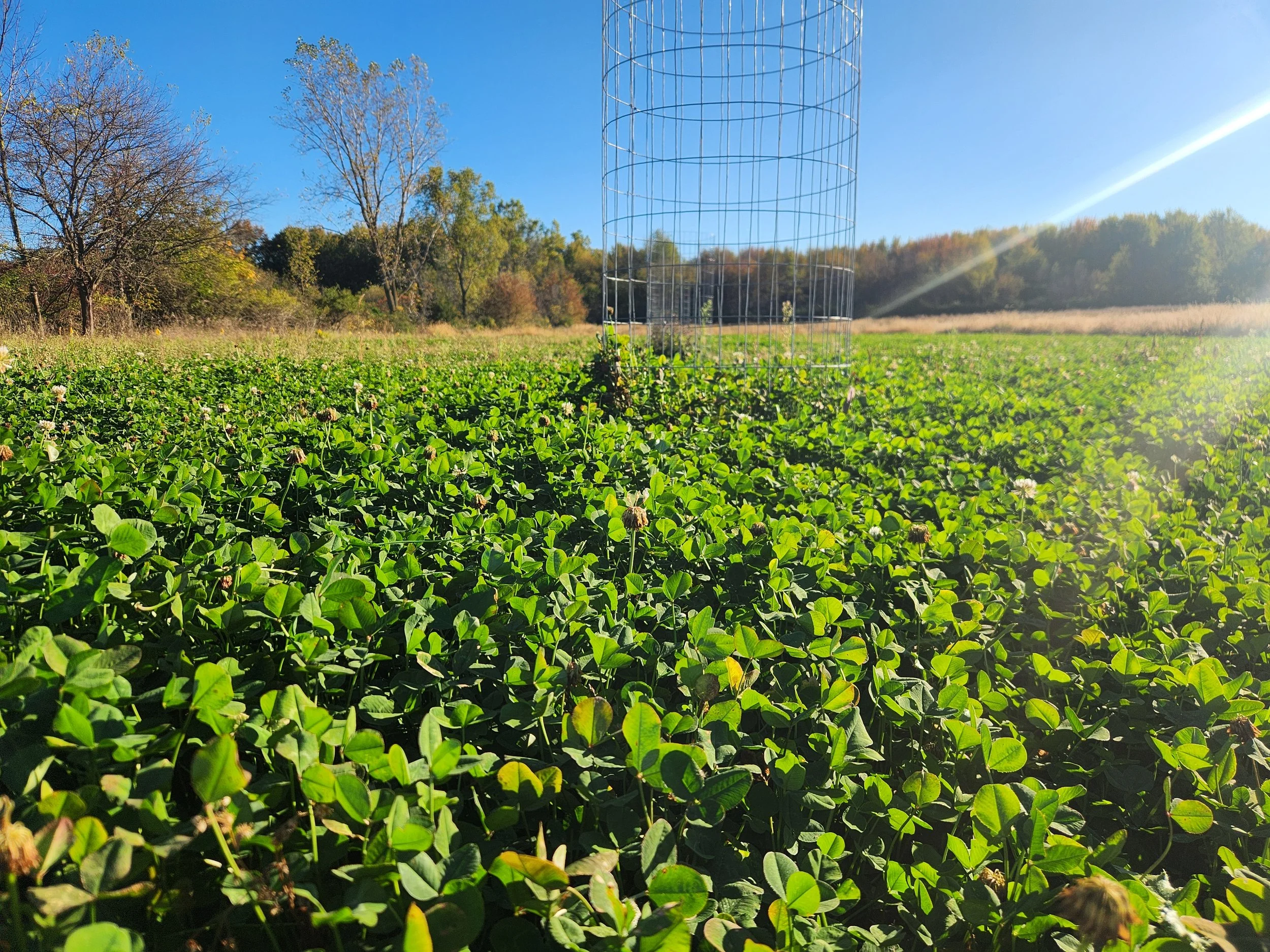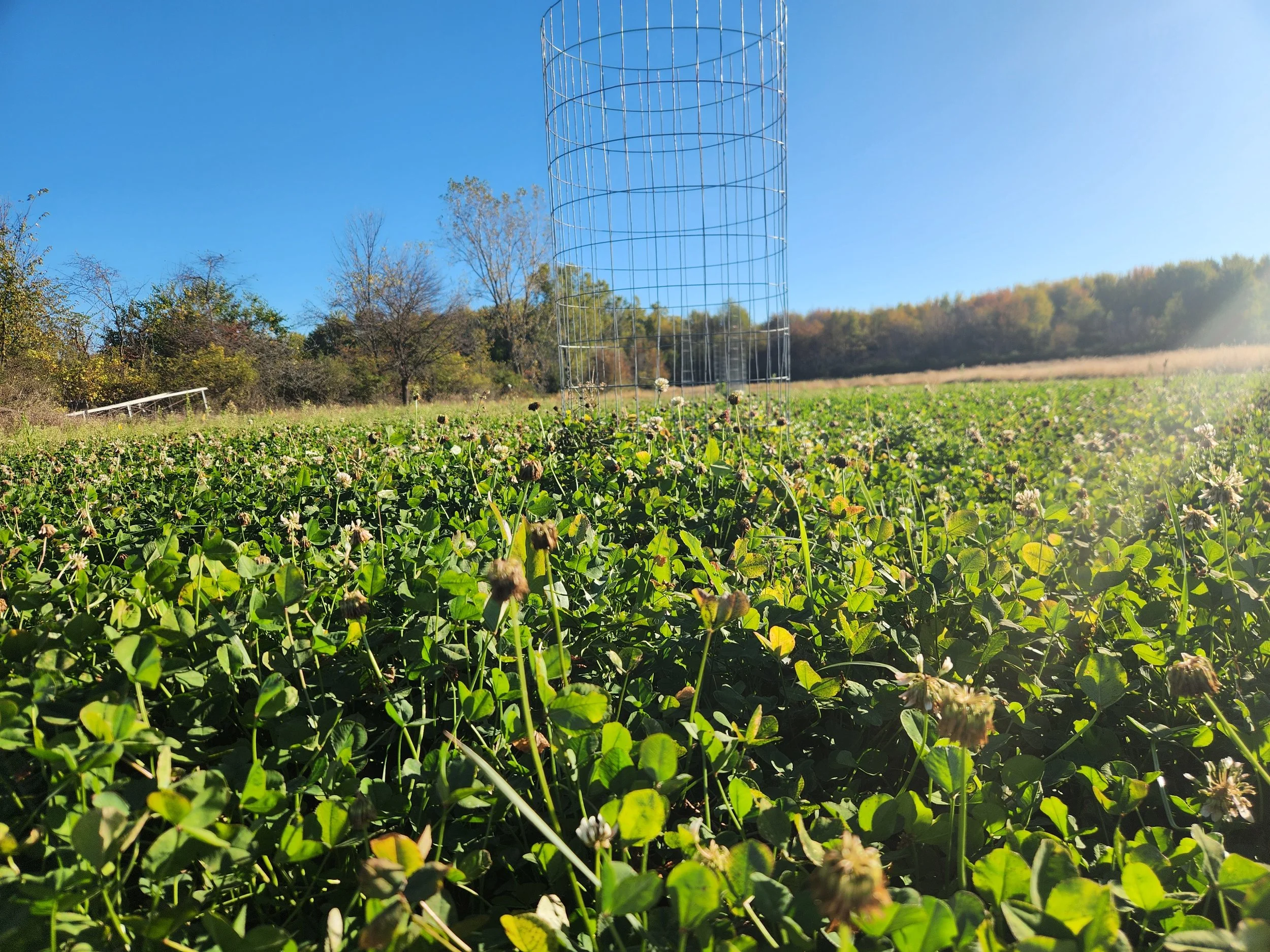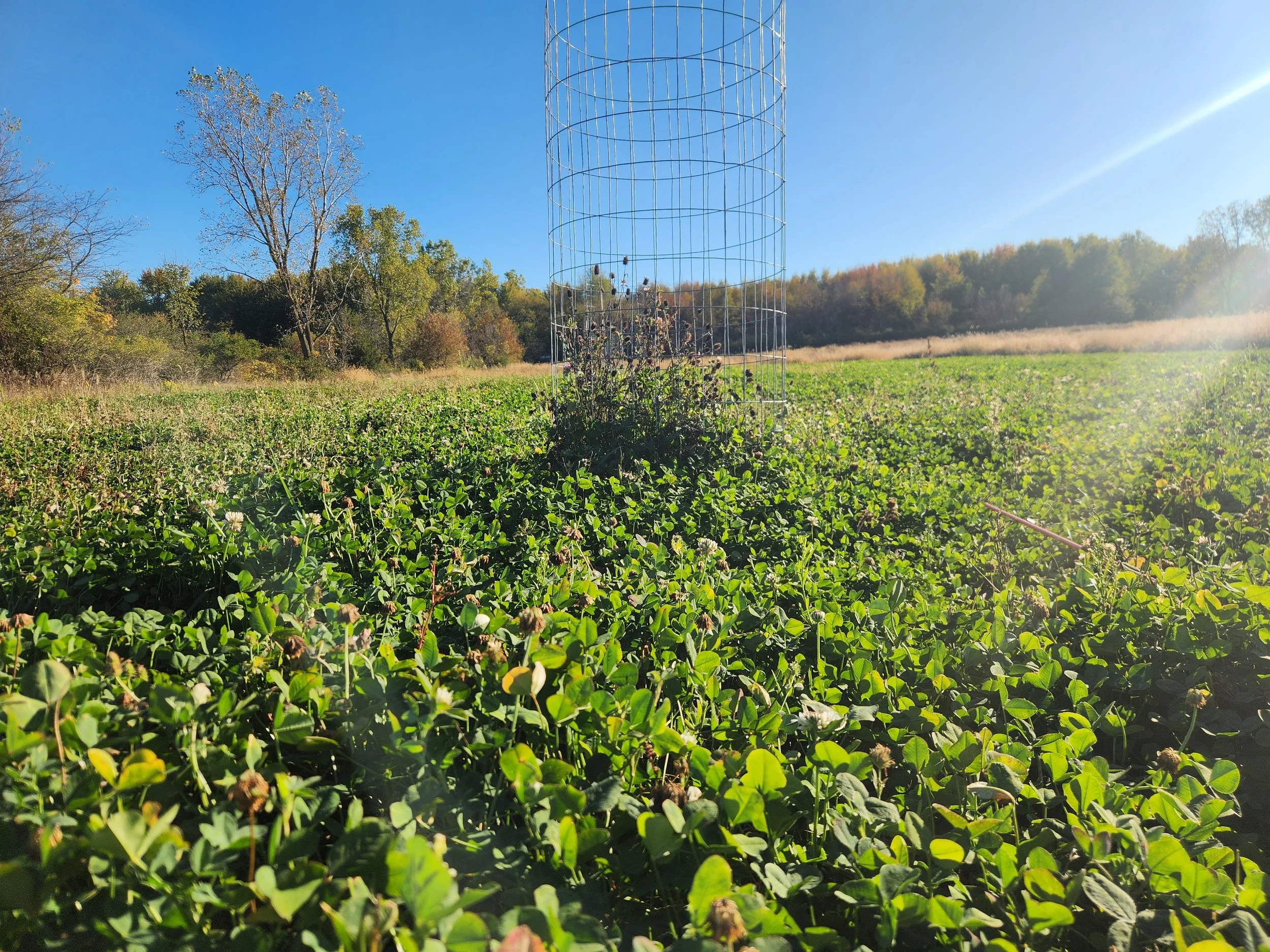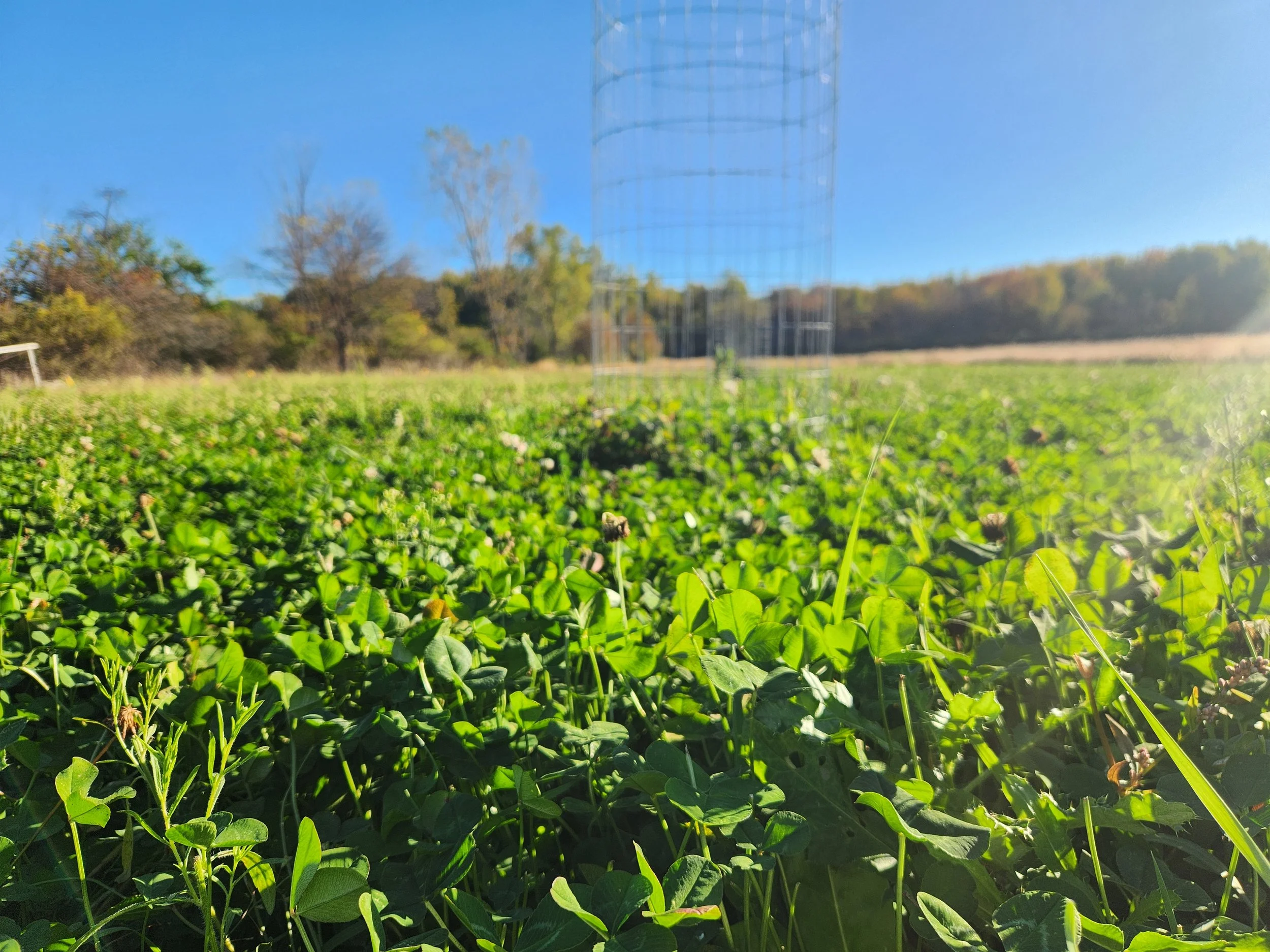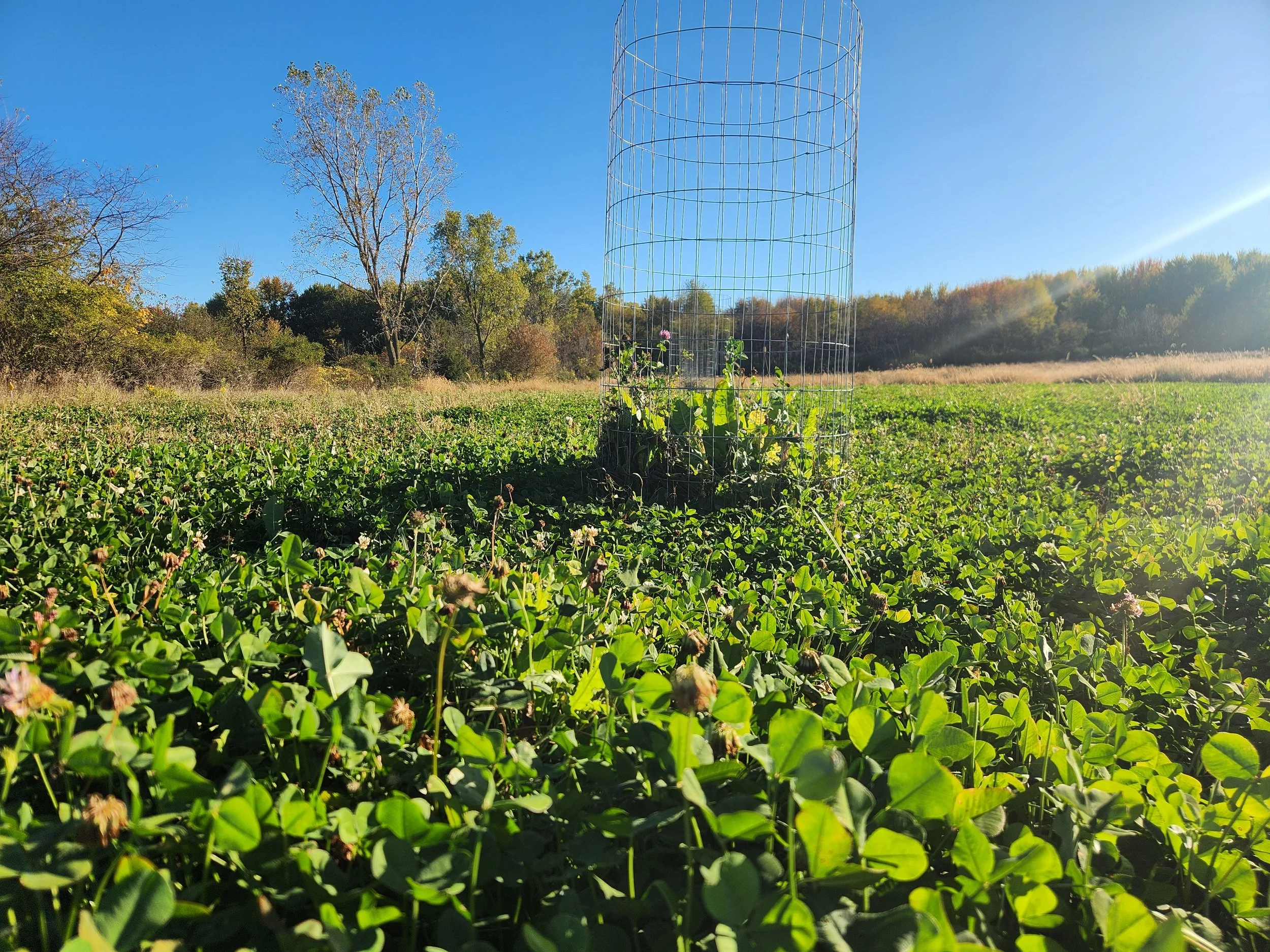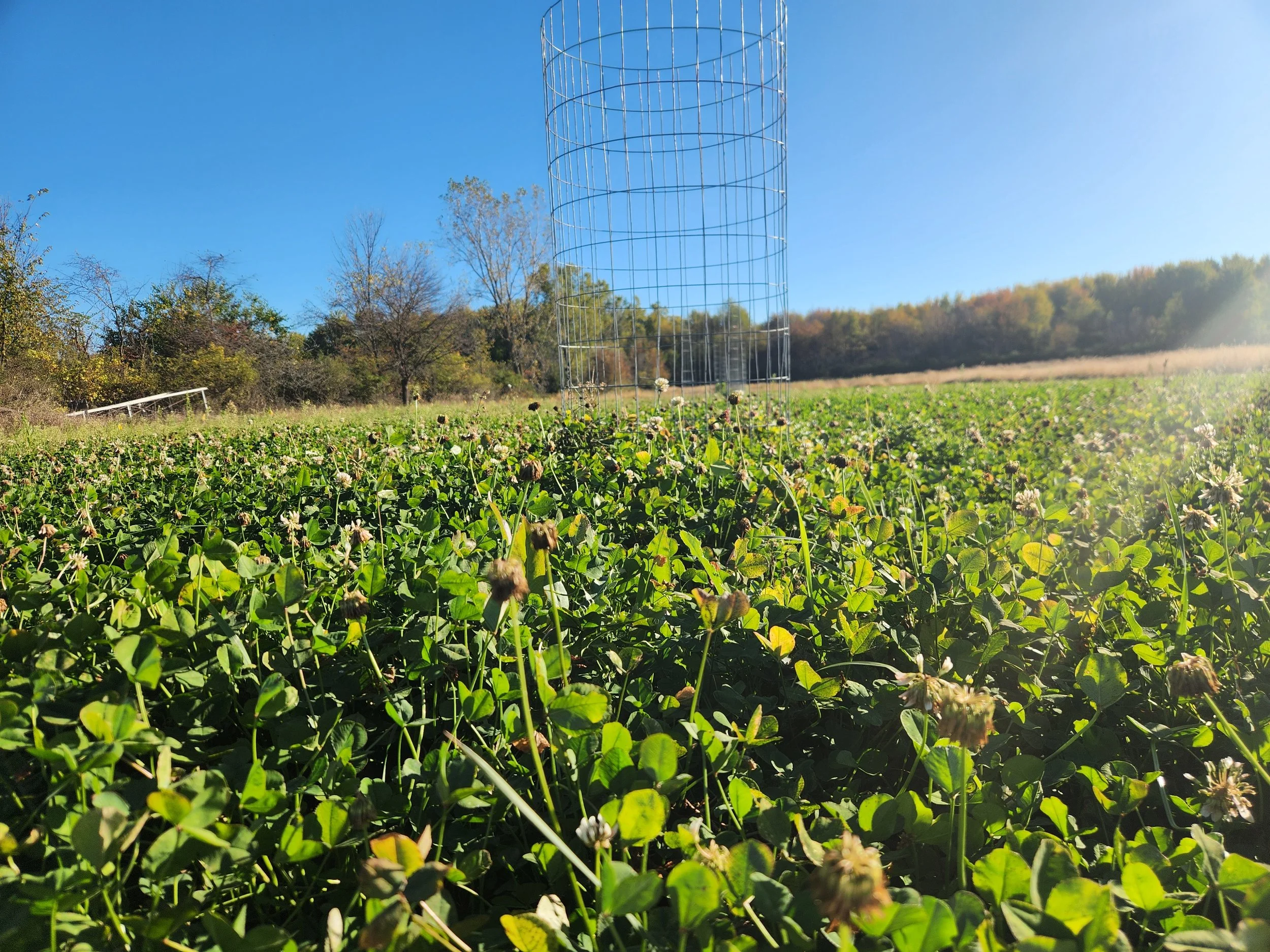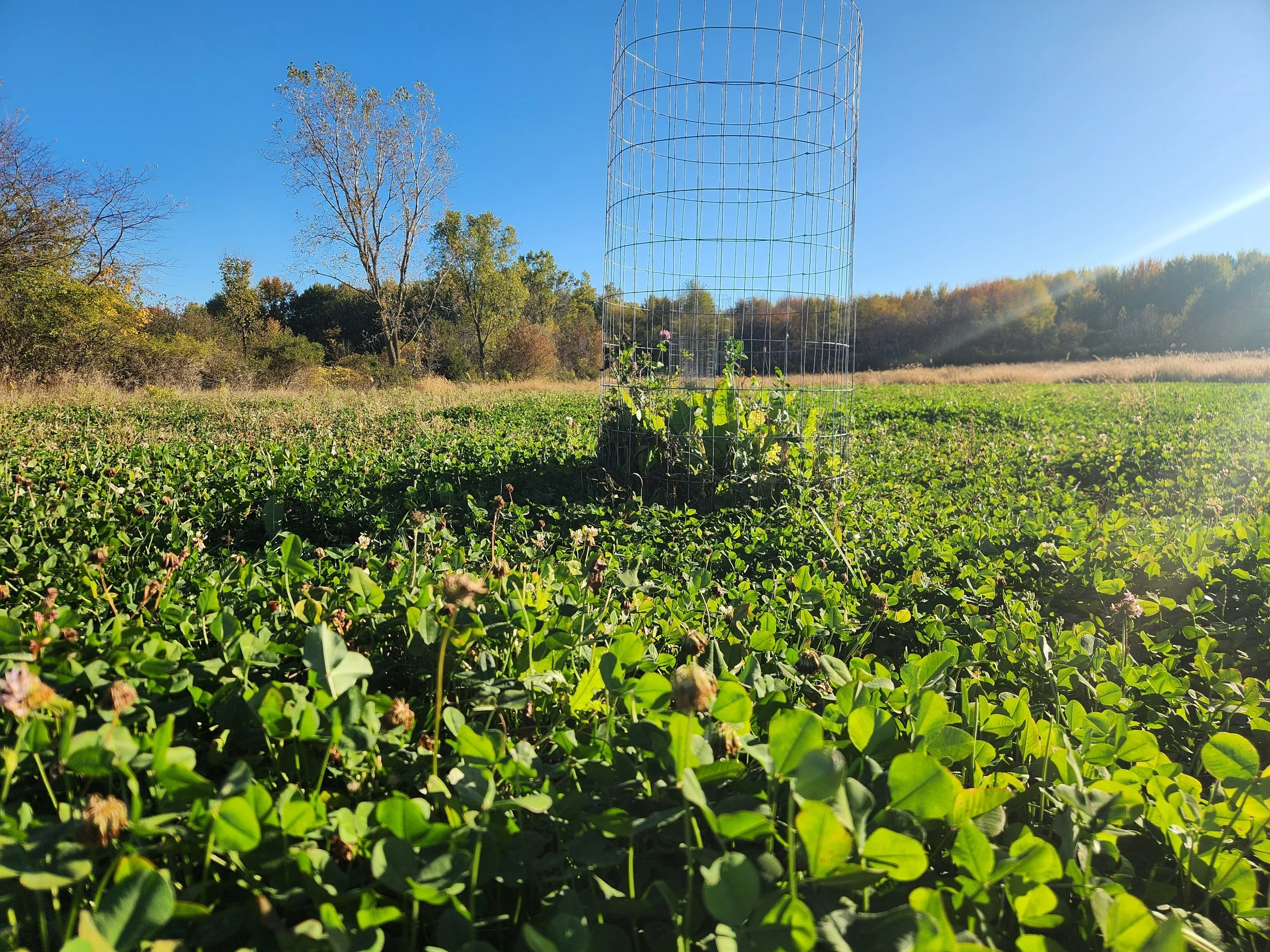by Brian Haynes
Update - 2025 Competition Plot
The pictures below show plots from 4 competitive companies in the deer plot world.
Also shown are our Midwestern Wildlife Zone (MWZ) TNT Mix and the new formulation of our Dry Ground Greens.
Competitor 1
A blend of clover; all raw seed (no seed coating) and no annuals. In this trial, it produced the least tonnage of the group and the deer are not hitting it very hard. It was slow to get out of the ground and has been the weediest of the observation plots.
Competitor 2
Also, a blend of clover; however, all the seed is coated, with half being annual and half perennial. This blend got out of the ground quicker and did a better job competing against weeds than Competitor 1, but it did not produce much more tonnage inside the cage.
MWZ TNT
Our clover mix is producing significantly more tonnage than any of the competitor mixes. It's all coated, got out of the ground quickly, and the deer are hitting it hard.
Competitor 3
A mix of chicory and clover. It produced only a little more tonnage than the Competitor 1 blend, but I noticed there is hardly any chicory in that mix.
Competitor 4
A mix of chicory and clover. It is the best of the competition; the chicory looks great, it is leafy and big. The deer are eating it well.
MWZ Dry Ground Greens (new formulation)
A mix of chicory and clover; the best-looking plot in the group, even out-producing our MWZ TNT by a little bit and producing significantly more tonnage than the top competitors in our region.
All Pics side by side
Conclusion
Be confident that when you are planting Midwestern Wildlife Zone products, you have some of the best seed varieties on the planet available for your food plots, mixed in the right proportion to ensure planting success, wildlife attraction, and long stand life.
You can be sure that these mixes will stack up well against some of the biggest name brands in this category. We've placed our mixes against the best competition we could find - reputable seed companies putting out quality products - and we are more than holding our own.
